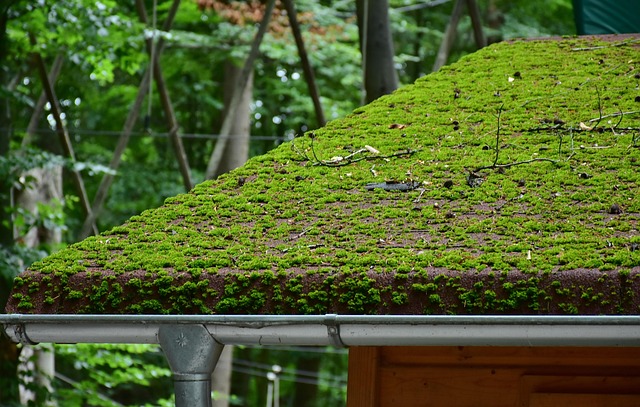“Elevate your home or business with the innovative power of synthetic roofing. This modern solution is transforming the way we protect our structures, offering both durability and style. In this comprehensive guide, we explore the world of synthetic roof installation, from understanding the durable synthetic materials to the eco-friendly benefits it offers. Learn about the straightforward installation process, discover how these roofs provide cost-effective protection, and find out essential tips for maintenance and repair to ensure a long-lasting, low-maintenance synthetic roofing system.”
- Understanding Synthetic Roofing: Materials and Benefits
- The Installation Process: Step-by-Step Guide
- Eco-Friendly and Cost-Effective Solutions for Your Roof
- Maintenance and Repair: Extending the Lifespan of Your Synthetic Roof
Understanding Synthetic Roofing: Materials and Benefits
Synthetic roofing has emerged as a modern solution for both residential and commercial buildings, offering an eco-friendly alternative to traditional roofing materials. These innovative roofs are crafted from durable synthetic materials, engineered to withstand various weather conditions and provide long-lasting protection. One of the key advantages lies in their cost-effectiveness; synthetic roof installation can be a budget-friendly option without compromising on quality.
The benefits extend beyond financial savings. Synthetic roofs are incredibly lightweight, reducing structural strain on buildings. Moreover, these materials are easy to maintain and repair, ensuring minimal downtime and disruptions. This low-maintenance nature makes synthetic roofing an attractive choice for businesses and homeowners alike, contributing to a more sustainable and efficient built environment.
The Installation Process: Step-by-Step Guide
The installation process for a synthetic roof begins with a thorough assessment of the existing roof structure to ensure it can support the new material. This step is crucial, as it determines any necessary repairs or reinforcement required before proceeding. Once prepared, the underlayment—a protective layer that adds insulation and moisture barrier—is carefully installed, creating a solid foundation for the synthetic roofing.
After the underlayment is in place, the synthetic roof panels are meticulously fitted, starting from the edges and working inward. These modern synthetic roofing materials are renowned for their durability, with each panel designed to withstand various weather conditions. Any gaps or openings are sealed to ensure water cannot penetrate, while fasteners secure the panels firmly. The final touches involve trimming excess material and ensuring all connections are watertight, resulting in a seamless, lightweight, and eco-friendly synthetic roof ready to protect against the elements for years to come.
Eco-Friendly and Cost-Effective Solutions for Your Roof
Synthetic roofing offers an eco-friendly and cost-effective solution for both homes and businesses looking to enhance their exterior aesthetics. Modern synthetic roofs are crafted from durable, lightweight materials designed to withstand harsh weather conditions while maintaining a sleek, attractive appearance. These innovative products provide a viable alternative to traditional roofing options, especially when considering the environmental impact of waste generated during installation and maintenance.
When it comes to cost-effectiveness, synthetic roofing excels in various ways. Firstly, its longevity reduces the need for frequent repairs or replacements, lowering long-term expenses. Secondly, synthetic roof installation is generally more affordable than conventional methods due to the materials’ ease of application and lower labor costs. Furthermore, many synthetic roofing solutions are designed for easy DIY repair, empowering homeowners to tackle minor issues without professional help, adding to overall cost savings.
Maintenance and Repair: Extending the Lifespan of Your Synthetic Roof
Maintaining and repairing your synthetic roof is an essential aspect of extending its lifespan and ensuring it remains in top condition. Unlike traditional roofing materials, modern synthetic roofs are designed to be low-maintenance, making them a popular choice for both residential and commercial properties. Regular inspections are still crucial to identify any potential issues early on. Small repairs, such as fixing loose shingles or sealing leaks, can prevent significant damage and costly replacements.
Synthetic roofing materials are known for their durability and resistance to extreme weather conditions. However, even the sturdiest of roofs may require touch-ups or replacement over time. Eco-friendly synthetic roof options are readily available, ensuring that any repairs or installations align with sustainable practices. Cost-effective synthetic roofing has gained popularity due to its longevity and ease of maintenance, making it a smart investment for both homeowners and businesses. Lightweight synthetic roofs are also advantageous as they reduce the structural load on buildings, providing additional peace of mind.
Synthetic roofing offers a modern, eco-friendly solution for both homes and businesses. By choosing durable, lightweight synthetic materials, you not only benefit from a cost-effective installation but also gain a long-lasting, low-maintenance roof. Following the step-by-step guide provided and keeping up with regular repair, your synthetic roof can withstand the elements while enhancing your property’s value. Embrace this innovative technology for a smarter, more sustainable future.
